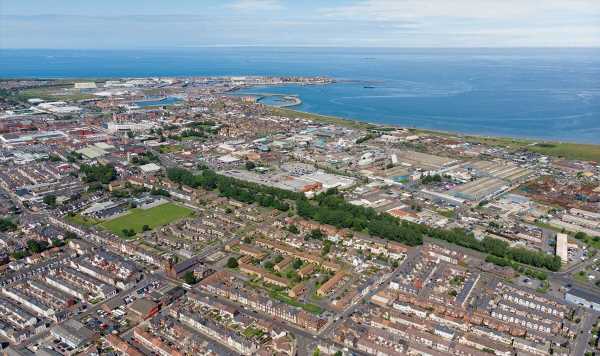
A seaside town has been named as one of the unhealthiest places to live in England and Wales.
According to the latest Office for National Statistics (ONS) data, Hartlepool in Durham has some of the highest rates of people living in poor health.
Statistics taken from the 2021 census revealed that 7.9 percent of residents were in “bad” or “very bad” health.
This placed the port town above the national rate of 5.4 percent and the north east figure of 6.9 percent.
The data also showed that 11.3 percent of people in Hartlepool were classed as disabled.
READ MORE The seaside town with the lowest life expectancy in England

And 6.8 percent of residents said they provided high levels of unpaid care to people who were ill or disabled.
Overall it was ranked the 10th least healthy town out of 331 places in England and Wales.
The figures highlighted wide disparities in health across the country as some areas reported having more than three times the amount of people in bad health compared to others.
But across England and Wales health slightly improved in the 2021 census from 10 years before.
In total, 47.5 percent of people across both countries reported their health as being very “good”.
Don’t miss…
Eight cholesterol-lowering foods that can aid weight loss, according to expert[EXPERT]
Seven ‘less common’ signs of lung cancer to spot[INSIGHT]
Signs of liver disease to spot as hospital admissions surge 22% in just one year[INFORMER]

We use your sign-up to provide content in ways you’ve consented to and to improve our understanding of you. This may include adverts from us and 3rd parties based on our understanding. You can unsubscribe at any time. More info
Compared to in 2011, this was an increase of 2.5 percentage points.
In 2021, 1.2 percent reported being in “very bad” health – a drop from 1.4 percent in 2011.
And the percentage who described their health as “bad” also fell, from 4.7 percent to 4.5 percent.
The 2021 census saw the borough of Elmbridge in Surrey ranked as the most healthy place with 88 percent of people saying they were in “good” or “very good” health.
Tower Hamlets in London and Merthyr Tydfil in Wales were ranked joint worst for health with 9.5 percent of people saying they were in “bad” or “very bad” health.

In response to the figures, Deepak Dwarakanath, chief medical officer at North Tees and Hartlepool NHS Foundation Trust, said: “Hartlepool and the entire Tees Valley has some of the greatest challenges with health inequalities in the country.
“While we are always here for people when they need care in our hospitals and community settings, we want to help people before it gets to this stage.
“We are regularly working with our partners in public health, local authorities, the voluntary sector and local community to tackle these inequalities and give our population more opportunities.
“Several projects have been set up over the last few months and years to help with this. This includes Making Every Contact Count, a joint NHS England and Public Health England initiative.
“The trust now has a team in post to raise the profile of this initiative and ensure our staff are using their day-to-day interactions with patients, relatives and their own colleagues to support people in making positive changes to their lives to improve their overall mental and physical health.
“As an organisation with Public Health England Active Hospital Status, we also work with our local partners to encourage our patients to be more active when in hospital and to continue to do so in their lives.
“A year ago we also set up a specialist alcohol care team which has assessed more than 1,000 patients coming into hospital and helped prevent more than 100 admissions into hospital.
“The team works closely with our stop smoking service to support patients and offer ongoing care once people are discharged from hospital back to their homes.
“Though we continue to face very stark challenges across our region, we are making significant progress in helping reduce these health inequalities.”
Hartlepool Borough Council was approached for comment.
Source: Read Full Article
